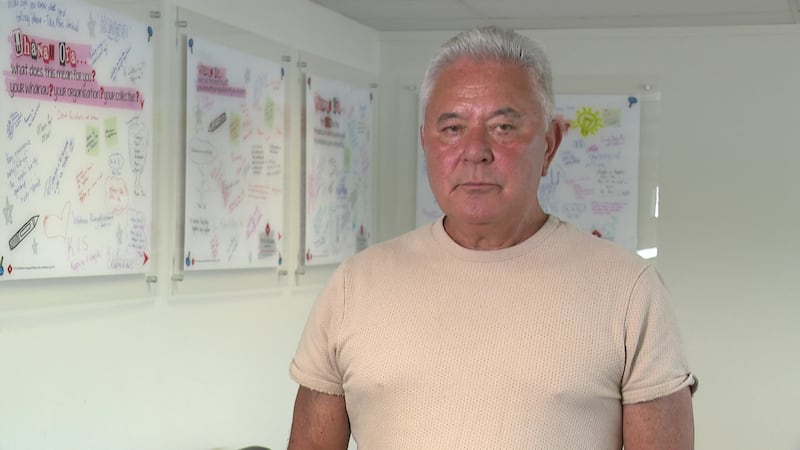A new era for Whānau Ora begins this week with the launch of four new commissioning agencies tasked with delivering the flagship kaupapa Māori support model to communities most in need.
Whānau Ora Minister Tama Potaka attended the launch of one of the 4 new commissioning agencies at Hongoeka Marae in Plimmerton, Māhutonga under Te Rūnanga o Toa Rangatira, in what he is describing as Whānau Ora 2.0.
The other agencies are Rangitāmiro, Te Tauraki (Ngāi Tahu), and The Tātou Collective, and will formally begin commissioning Whānau Ora services across Aotearoa from tomorrow.
This marks the most significant change to the model since its inception in 2010.
At a launch today, Minister Potaka acknowledged the legacy of Whānau Ora founder, the late Dame Tariana Turia.
He said the Government’s focus is now on strengthening outcomes for those in greatest need.
“Whānau Ora has proven itself as a trusted, whānau-centred approach. It’s now time to take it to the next level with clearer regional focus, a more robust evidence base, and a renewed commitment to making a real difference for whānau,” Potaka said.
The changes come alongside a $179 million funding announcement in last year’s Budget, which is significant.
Resources will now be allocated based on the 2023 Census Deprivation Index to target areas of high need.
Māhutonga Commissioning Agency - Te Rūnanga o Ngāti Toa Takes the Helm in Region 2
Te Rūnanga o Toa Rangatira will lead Whānau Ora commissioning in Region 2, which covers the lower North Island and East Coast, under the new entity Māhutonga.
The name references the Southern Cross constellation, symbolising guidance and aspiration.
The new Māhutonga chair, Te Pūoho Katene, said the first year will focus on continuity and building relationships across the region.
“For the sake of continuity, and because we didn’t yet know enough to do anything different, we’re rolling over existing providers initially. But as we spend more time with communities and providers, we’ll look to strengthen the network and address any gaps or weaknesses,” Katene explained.
He said having the commissioning closer to the community offers greater potential for locally driven solutions, a view echoed by Ngāti Toa CEO Helmut Modlik.
“We see this as an opportunity to enable communities to take the lead. Eventually, we want to do ourselves out of the job,” Modlik said.
Despite his well-known criticisms of the Government over broader issues facing Māori, Modlik defended Ngāti Toa’s decision to step into the commissioning space.
“It’s a contest of ideas. Where we agree with the Government, we’ll say so. Where we don’t, we’ll challenge them. But ultimately, real change comes from empowering communities over the long term, not within a three-year election cycle,” he said.
Investigation into allegations of inappropriate use of funds
The transition to the new commissioning agencies has not been without its difficulties.
Just last week, Te Puni Kōkiri (TPK) launched an independent review into allegations of inappropriate use of public funding appropriated for the previous Whānau Ora commissioning services.
The independent review relates to allegations of funding misuse by two agencies, Te Pou Matakana Limited, otherwise known as the Whānau Ora Commissioning Agency, and Pasifika Futures Limited, and would focus on whether the agencies met their contractual obligations when using public money.
The review followed Minister Tama Potaka seeking urgent advice on “electioneering concerns” relating to an advertisement encouraging Māori to sign up to the Māori electoral roll, paid for by Te Pou Matakana Limited, released this week, and the revelation Super Rugby franchise Moana Pasifika had also received Whānau Ora funds.
The investigation is ongoing.
Previous commissioning agency judicial review still live
Earlier this year, the Whānau Ora Commissioning Agency (WOCA), led by John Tamihere, filed a judicial review in the High Court challenging the Government’s overhaul of the Whānau Ora commissioning model.

The legal challenge argued the decision to replace the existing agencies was allegedly politically motivated and made without proper consultation, putting at risk the stability of essential services for vulnerable whānau.
WOCA contends the changes undermine the kaupapa Māori foundations of Whānau Ora and disregard the significant investment and relationships built over the past decade.
The judicial review also cited concerns that the Government’s process breached principles of natural justice by excluding WOCA from meaningful engagement during the transition.
An initial hearing took place in May to consider whether aspects of the transition should be paused while the legal challenge proceeds.
The court has yet to release its decision, with further hearings expected later this year.
Opposition politicians, community leaders, and some within the Whānau Ora sector have criticised the move, questioning whether it was politically motivated and whether it risks destabilising services for vulnerable families.
Minister Potaka has dismissed those claims. He maintains the changes are evidence-based and driven by the need to better target resources. He also highlighted a new data-driven approach, including linking anonymous Whānau Ora data to the Stats NZ Integrated Data Infrastructure, as part of strengthening accountability.
Helmut Modlik acknowledged there were concerns in the provider community but emphasised Ngāti Toa’s commitment to collaboration.
“We’ve gone around the region, met kanohi ki te kanohi with as many people as possible, whānau, providers, communities, to explain who we are and what we’re trying to achieve. The feedback has been overwhelmingly positive,” he said.
Pacific Communities and South Island Also Covered
The other new agencies are Rangitāmiro, which covers the North Island north of Taupō, Te Tauraki, a subsidiary of Ngāi Tahu, covering the South Island, and The Tātou Collective, focused on developing delivery models for Pacific communities nationwide.
All agencies are required to introduce investment boards to ensure community input into funding decisions, expand navigator workforces, and improve identification and support for high-risk whānau situations.
While the new model signals a fresh start, the success of the transition will depend on how effectively it maintains continuity for whānau and whether the promised improvements materialise.



